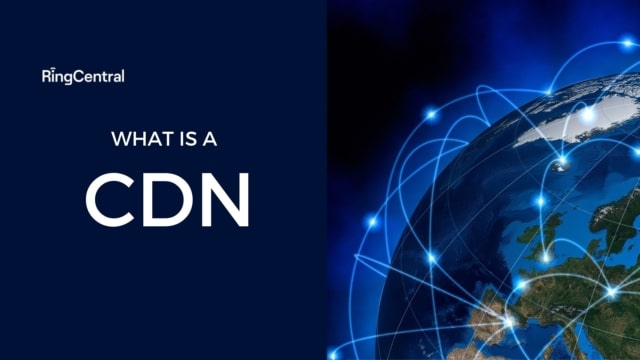What is a CDN? How Does a Content Delivery Network Actually Work?
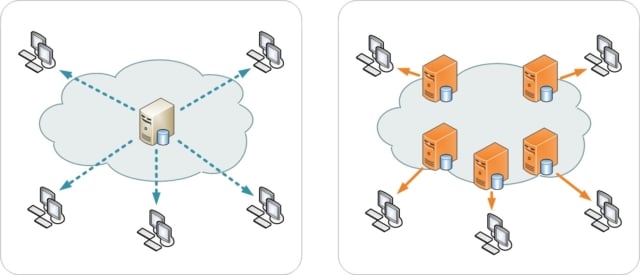
You already know that content is king. Delivering high quality content that engages your customers is more likely to push them through your sales funnel and persuade them to buy. Consistently high-quality content is also more likely to encourage brand loyalty, thus increasing customer lifetime value (CLV).
Your content can encompass many different formats. It may be your ecommerce site and your landing pages, it may be a blog that you use in an affiliate marketing program, or it could be a video shared on YouTube. The common factor is that you want users to be able to access it quickly and with minimum fuss.
There’s little point in writing a beautiful letter unless you have an efficient postal system to get it to the person you’ve written to. That holds true in the digital marketing world, too. If you don’t have an efficient way of getting the content you’ve put so much effort into to your customers, then your efforts have been wasted.
This is where a CDN (content delivery—or distribution—network) comes into play. What exactly is a CDN and how does it work? What advantages does it offer to your business and what factors affect any decision to implement one?
Read on to find out.
What is a CDN?
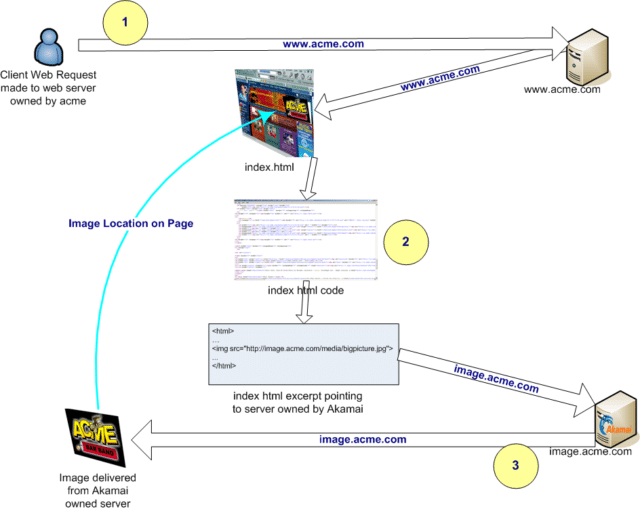
A CDN is a high-performance network of servers, distributed over a wide or particular geographic area, that work in unison to deliver internet content quickly and efficiently.
What it achieves is the swift transfer of the assets you need to load content from the internet. That content can include images, video content, HTML pages and javascript files.
Most DNS web traffic is now sent to you via CDN services and will always be used by major internet entities such as Facebook, eBay, Amazon and Netflix. There is also a security aspect to most CDNs as, if properly configured, they protect websites against a number of malicious online attacks, including DDoS (distributed denial of service) attacks.
How Does a CDN Work?

Reducing Latency
CDNs help reduce latency in two main ways:
- Caching content. A CDN can cache and compress your web page as a mirrored version which can then be stored as “backup” in a number of data centres. As these centres are strategically located, load balancing ensures that content is delivered to the end user based on their location, shortening the time to deliver (in either direction), and also reducing the likelihood of packet loss.
- Optimisation. A CDN works to optimise the connections between end users and the origin server. They do this through reusing sessions, TCP (transmission control protocol) pre-pooling, and network peering. The best CDNs also speed up any connections by routing their traffic through a Tier 1 network with a low amount of transfer hops.
Architecture & Components
1. Points of Presence (POPs)
One of the primary aims of a CDN is to store data that needs to be delivered quickly. It does this through strategically placed PoPs. Combined with edge nodes, these help the CDN deliver data quickly, reduce delivery costs, increase the global spread of content, and protect the network by making the network surface more distributed.
2. Caching Servers
As already mentioned, caching your content can help reduce latency. What a CDN is seeking to do is to minimise the distance between your website server and your end user. To achieve this, a CDN will cache a version of your content in different locations (POPs). Think of it as similar to Amazon having multiple warehouses to expedite delivery according to where you live.
3. SSD/HDD + RAM
Of course, CDNs will be storing a lot of content. They do this by storing cached files on SSDs (solid state drives) and HDDs (hard disk drives) or in RAM (random access memory).
CDN and Cloud Computing
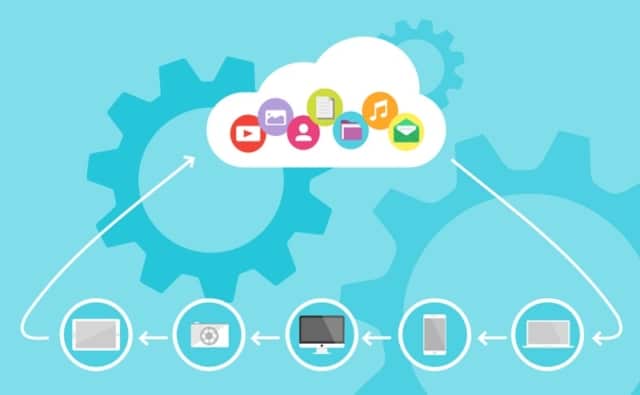
While CDN and cloud computing use some of the same software and hardware, they are in essence very different. A CDN is an example of specialised architecture designed to deliver content to multiple users simultaneously. Cloud computing removes the geolocation aspect as far as possible, and while CDN is an actual application, cloud computing can host web applications.
CDN and Web Hosting
Traditional web hosting would mean that the server hosting your site would deliver all the content, no matter where users are located. A CDN speeds up that delivery process by taking most of your content and serving it to users via cached servers, thus decreasing delivery and page load times.
What is an Example of a CDN?
Much of today’s internet content is delivered via CDNs. For example, if you were living in Glasgow and wanted to access a site in the USA, if that site was hosted only on an American server, then you may experience slow delivery/loading times.
With a CDN, cached versions of that site would be held in different locations around the world, making loading times faster by utilising the server closest to you.
Who Uses a CDN?
Literally any business or individual who has a website or application that’s likely to have multiple users accessing it from a wide variety of geographical locations. However, they’re especially useful to websites that are large and complex (such as Amazon) and that have users in most countries. They’re also useful if your app or website has a lot of dynamic content.
What Are The Advantages of Using a CDN?
Optimised Web Performance
Because your content is more distributed and closer to users, your overall site performance is optimised with faster loading times and lower bounce rates.
Your conversion rates may suffer if your site is slow to load. In fact, those rates can drop by an average of 4.42% for each additional second your site takes to load (in relation to 0-5 seconds).
Reduced Bandwidth Costs

Web hosting services charge for any data transfer from the originating server. With cached servers and content, less data is going in and out of the host server, so costs are less.
For example, if you owned a takeaway shop in Dartford in London, and delivered regularly to Grays (on the other side of the river) then you would have added toll costs for every delivery. Open a satellite branch in Grays and you reduce the costs of delivery.
Boosted Content Availability, Reliability, and Redundancy
With the global network of CDNs, you’re increasing the availability of content to global audiences through localised PoPs.
Because your content is distributed across multiple servers, CDN websites tend to have high availability and reliability, and very little—if any—downtime. If you use multiple CDNs, your website will operate as normal even if one CDN server fails.
Upgraded Data Security Against DDoS Attacks
Imagine keeping all your valuables in one place. They would be more susceptible to theft in that scenario. By December of 2020, there had been 152,500 DDoS attacks that year. Using a multi-CDN solution means your data is spread across multiple PoPs, thus making your website or app less susceptible to a DDoS attack.
Access to Intelligence
With almost half of all internet data traffic handled by CDNs, that means there’s a huge amount of potential analytics data available.
A CDN provider can share that data and metrics with customers, giving you informed insights that let you take action to improve many processes and workflows. That data can also help you optimise your sites further which can benefit user experience as well as sales and conversion rates.
Increased User Satisfaction
With speedy and consistent delivery, you’re helping to improve the customer journey and to raise customer satisfaction levels. This doesn’t only apply to your existing customers but can have a knock-on effect by attracting new customers due to positive reviews and feedback from people using your site.
Factors to Consider When Choosing a CDN
Your Company’s Current Needs
Knowing the needs of your business is the essential first step in choosing a provider. Most of those needs will revolve around the type of content you want to distribute. For example, if the bulk of your content is images or videos, then network bandwidth consumption will be your primary focus. If your content is more dynamic and personalised, then you will look at end-to-end connectivity.
A CDN with multiple POPs is not necessarily an optimum solution. You may want to look at connectivity quality, an optimised software stack, and the intelligence of the “middle mile”. You will also want to know if a provider offers scalability for when you grow as a business.
Location of Users
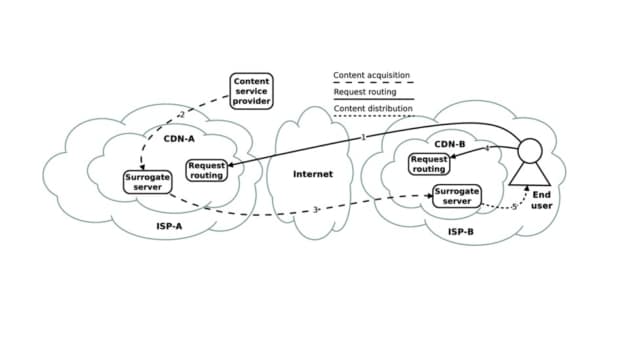
After the needs of your business, the next factor to consider is the needs of your users. To be more specific, you should consider the geographical locations of those users. This will usually be related to your strategic needs: Where does your company sell the most products or where are most website visits originating?
You may find a primary CDN that offers good coverage for most of your needs. But you may also have “hot spots” that fall outside the coverage of that global CDN and may also want a specialised CDN for different regions.
Performance and Functionality
For many websites, your primary need may be swift load times, especially if you’re an online store of some type. So, you need to consider whether a particular CDN delivers the performance and functionality you need. Does that CDN deliver content quickly or how fast will its edge servers process any requested files?
The two main factors you want to look at are latency (in terms of milliseconds) and throughput (in terms of kilobits per second, 8 kilobits = 1 kilobyte). You may also want a provider that offers real-time analytics, ability to upload files via FTP, an intuitive user or API interface, and ability to instantly purge content if needed.
If your CDN uses Anycast, then it sets a single IP address across all nodes. It still uses DNS but will only have that one IP address rather than multiple ones. Anycast is a specialised network that helps with addressing and routing so that any requests are routed to a variety of nodes. As far as a CDN is concerned, Anycast will route traffic to the closest data centre best placed to efficiently process requests.
Pricing and Cost
Costs are always an important factor, and CDN can come with a large price tag. You need to balance your needs and the potential costs to see if plans are affordable. Three of the major providers you can look at are Cloudflare, Amazon CloudFront, and Google Cloud CDN. Will utilising CDN see a rise in revenue that makes the investment worthwhile?
Security Features Available
Cybersecurity has never been more important. Cybercrime is on the rise and the average cost of a data breach is $3.86 million. Beyond optimisation and speed, you want a CDN solution that enhances your security, especially against DDoS attacks but also other threats.
When looking at different providers, ask about their security protocols, such as a web application firewall, SSL certificates, and DDoS protection, and whether they offer end-to-end security that can help protect your ecommerce store, software, blog, or any content that you provide.
Level of Support
It’s very probable that your business operates, or is available, 24/7 on a global scale. That means that you want support when you need it, irrespective of where you’re located and where your provider is. You need quick and efficient responses from their support teams 24/7/365.
You need access by phone, email, or other messaging platforms, and you need their staff to be both friendly and knowledgeable, so that any problems can be resolved swiftly and efficiently. It also helps if you can access tutorials that assist with setup.
Conclusion
If you have significant traffic spread over a wide geographical area, then a CDN is a must. A good CDN, such as Akamai, can assist your DevOps team with things such as headers (http/https) and cookies. Any business operating online relies on speed and a CDN plays a major role in achieving that.
With internet traffic increasing, and with most websites now reaching every corner of the globe, CDN can help ensure that end users always have quick access and a good experience.
Originally published Nov 03, 2021
